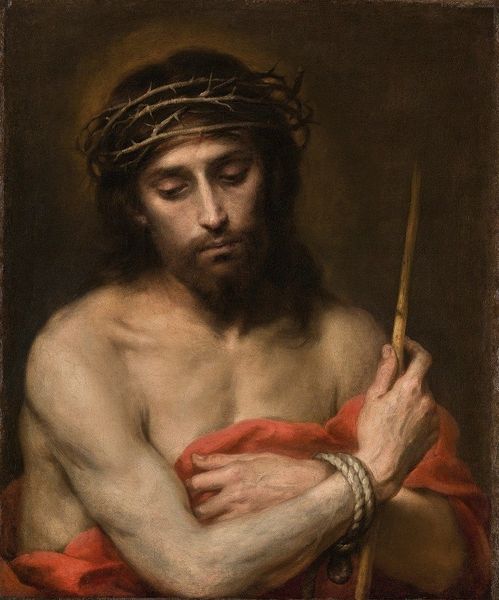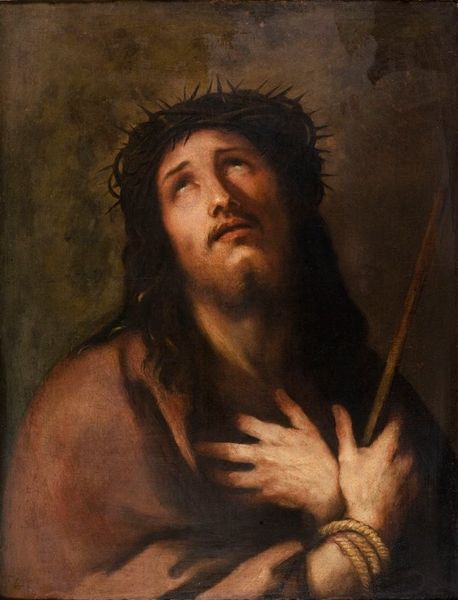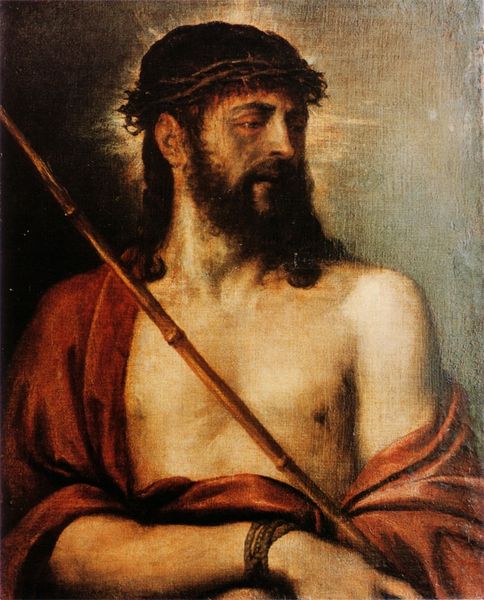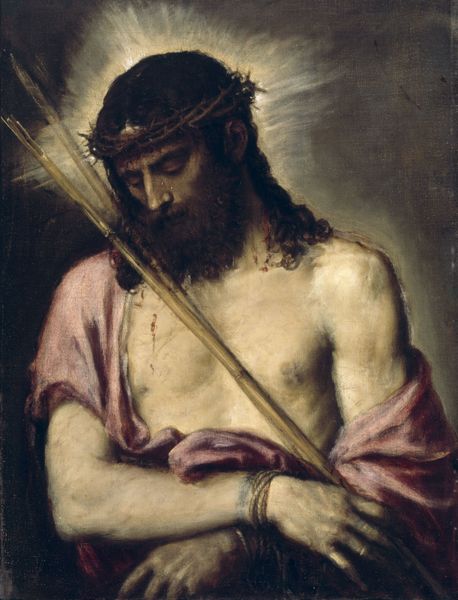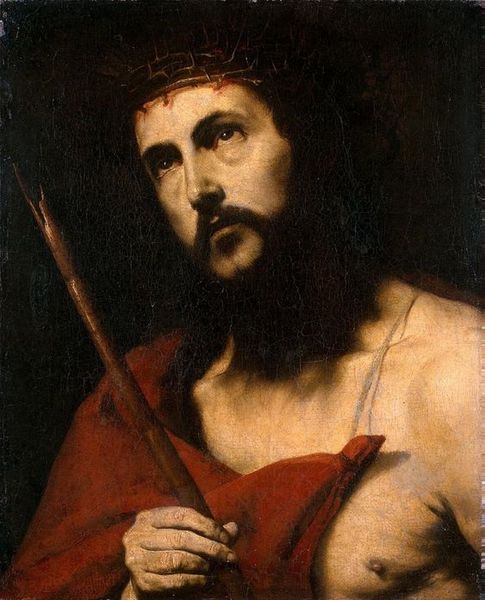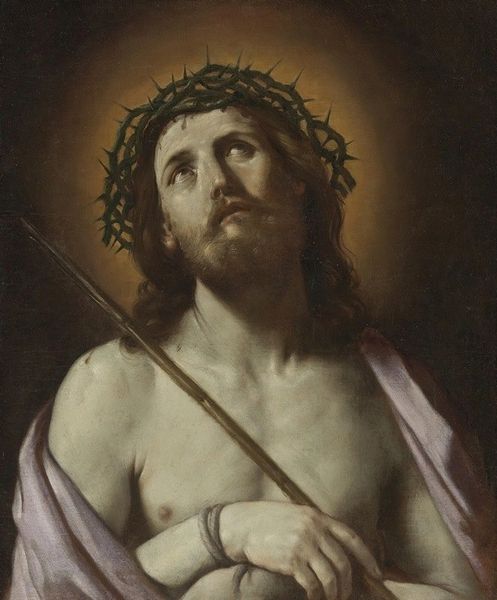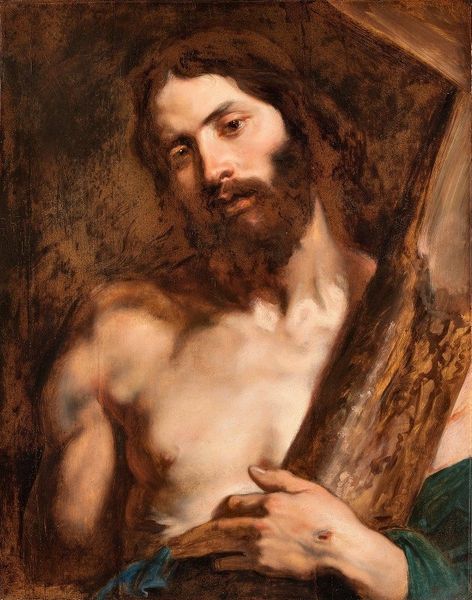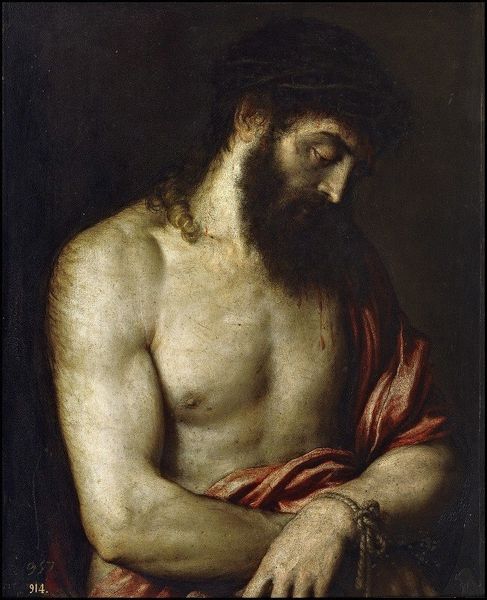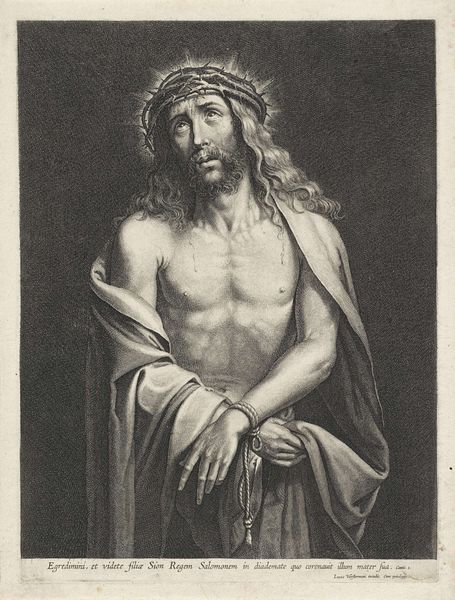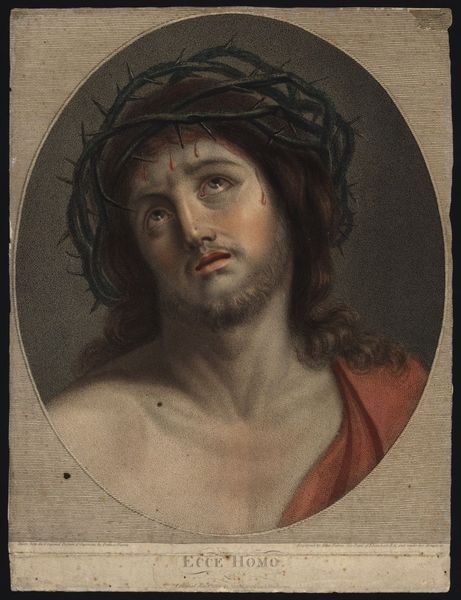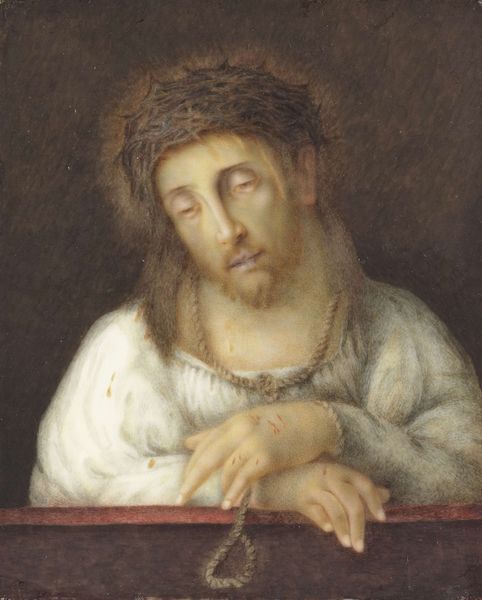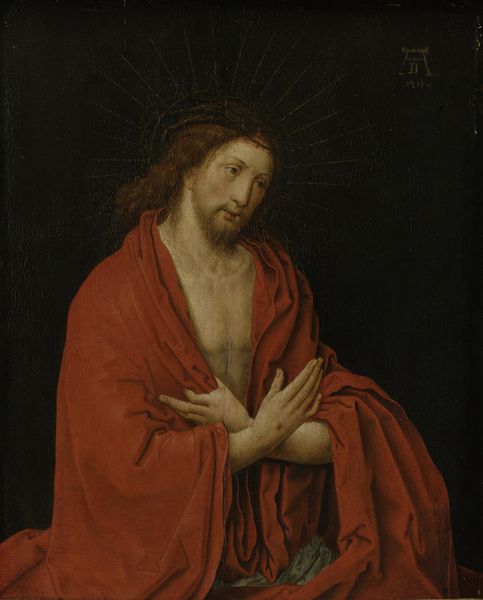
painting, oil-paint
#
portrait
#
baroque
#
painting
#
oil-paint
#
figuration
#
oil painting
#
jesus-christ
#
chiaroscuro
#
christianity
#
portrait drawing
#
history-painting
Copyright: Public domain
Bartolomé Estebán Murillo rendered this "Ecce Homo" in oil, presenting Christ crowned with thorns. This image, laden with symbols of suffering and divinity, speaks volumes about the human condition. The crown of thorns, a mocking symbol of kingship, ironically underscores Christ's spiritual authority. This motif echoes through art history, appearing in Byzantine icons, medieval sculptures, and Renaissance paintings. Each iteration reflects a specific cultural interpretation of sacrifice. The image of bound hands appears across time. We find it depicted in ancient Roman art representing prisoners of war, and later it signifies enslavement. The appearance of this symbol may resonate with unconscious collective memories of subjugation. The emotional power here is palpable. Christ's downcast gaze conveys profound sorrow, engaging viewers on a deeply human level. This invites empathy and introspection. Like a recurring dream, the Ecce Homo theme resurfaces, evolving from a symbol of religious martyrdom to one of universal suffering. The cyclical progression reminds us of humanity’s ongoing struggle with morality.
Comments
No comments
Be the first to comment and join the conversation on the ultimate creative platform.
